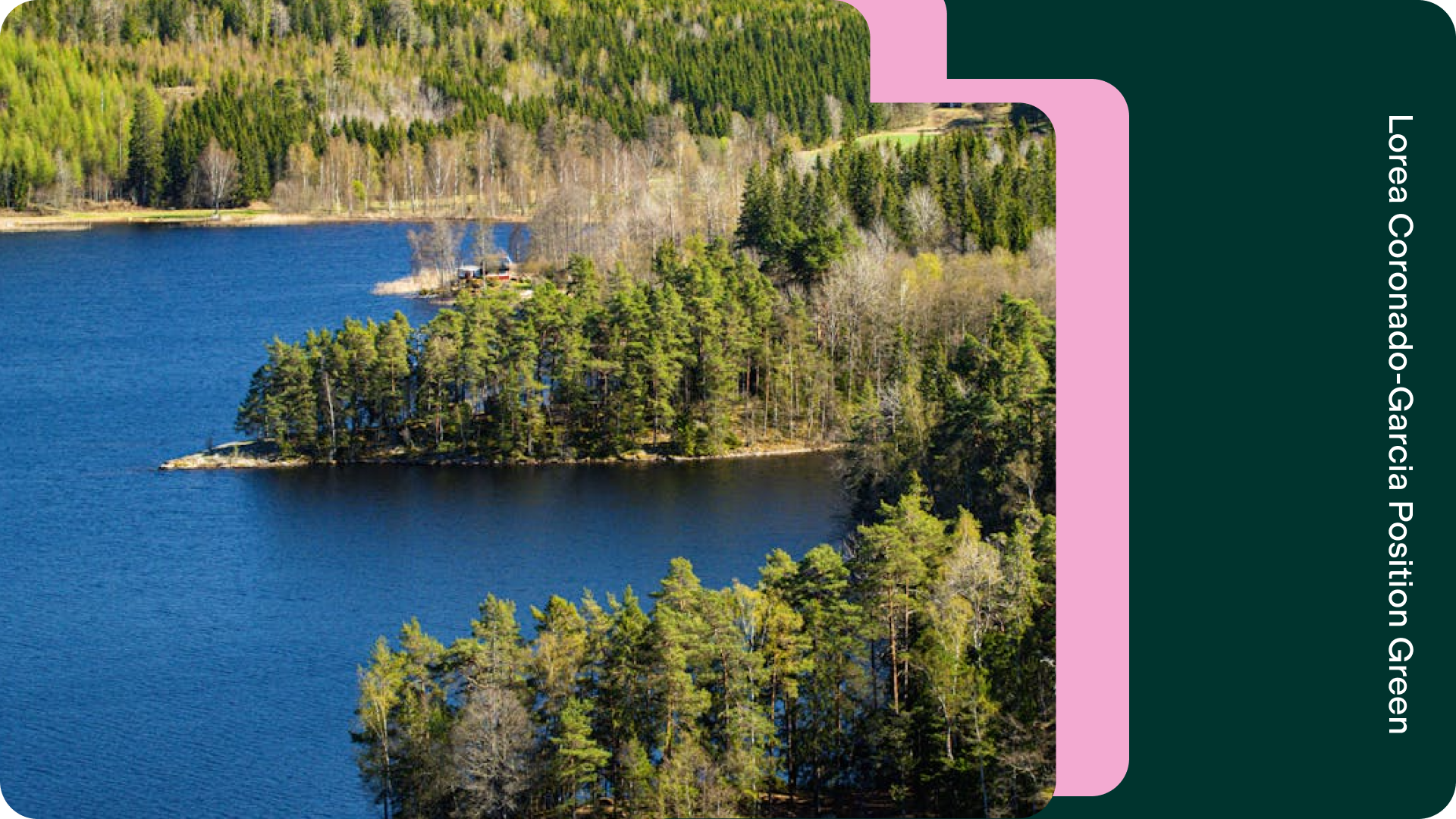The climate and nature strategy checklist for sustainable business leaders

In 2025, though, leading businesses are pushing beyond regulatory alignment—building resilience, uncovering innovation opportunities, and earning stakeholder trust.
Understand what’s coming in climate disclosure and nature-related frameworks
As climate and nature regulations evolve, a range of new and updated frameworks are shaping how companies disclose risks, measure impacts, and set science-based strategies. Below is a quick-reference guide to the key acronyms featured in this checklist.
TNFD – Taskforce on Nature-related Financial Disclosures
A global framework designed to help organizations disclose nature-related risks and opportunities in a structured way. TNFD uses the LEAP approach (Locate, Evaluate, Assess, Prepare) to help companies map their dependencies and impacts on nature. Its recommended disclosures align with climate frameworks like TCFD and reporting standards like ISSB, ESRS and GRI.

“The TNFD is really well equipped to prepare disclosures that are aligned with ISSB, with GRI.”
Sander Keulen, Managing Director, Benelux, Position Green
LEAP – Locate, Evaluate, Assess, Prepare
A four-step analytical process developed by TNFD to help companies understand and respond to nature-related risks:
- Locate your interfaces with nature
- Evaluate your dependencies and impacts
- Assess your risks and opportunities
- Prepare to respond and disclose
SBTN – Science Based Targets Network
An initiative supporting companies to set science-based targets for nature—spanning freshwater, land, oceans, and biodiversity. SBTN complements the climate targets from the Science Based Targets initiative (SBTi) and helps companies understand how to move beyond carbon into nature-positive strategies.
CSRD – Corporate Sustainability Reporting Directive
A European Union directive that significantly expands ESG disclosure requirements for large and listed companies. CSRD includes double materiality, requiring companies to report both how sustainability issues affect them, and how they affect society and the environment, including nature.
ISSB – International Sustainability Standards Board
An international body formed by the IFRS Foundation to create globally consistent sustainability reporting standards. The ISSB’s standards focus primarily on investor-relevant climate disclosures and are designed to be interoperable with frameworks like TNFD and GRI.
GRI – Global Reporting Initiative
One of the most widely used sustainability reporting standards, GRI enables organizations to report on their environmental, social and governance (ESG) impacts. GRI’s biodiversity and ecosystem disclosures support detailed, stakeholder-focused reporting and align with both CSRD and TNFD.
1. Framework and regulatory horizon scan
As the regulatory environment matures, climate and nature-related disclosures are becoming more interconnected. Companies already reporting under CSRD, ISSB, or GRI will find that newer frameworks like TNFD and SBTN are not separate obligations — they are built for alignment. This section helps you pinpoint where nature-focused reporting fits into existing compliance efforts and how to prepare for what’s next.
Are we tracking alignment with the latest frameworks, such as?
- TNFD: 14 recommended disclosures based on the LEAP approach (Locate, Evaluate, Assess, Prepare)
- SBTN: Guidance to set science-based targets for ecosystems, biodiversity, water and land
- CSRD, ISSB, GRI: Interoperability with nature frameworks
Do we understand how double materiality applies to nature?
“You look at your dependencies and your impacts on nature. That’s what we call the double materiality principle.” — Sander Keulen, Managing Director, Benelux Position Green.
Have we started preparing voluntary or mandatory nature-related disclosures?
This could include mapping your biodiversity risks using TNFD’s LEAP approach across three priority sourcing regions, even though it is not yet required under CSRD. This early-stage mapping helps identify exposure to water stress and habitat loss, which is then shared in your voluntary sustainability update.
2. Internal readiness
Governance, materiality and cross-functional alignment
Have we mapped our operational and supply chain exposure to nature-related risks and dependencies?

“Start within your own operation… map all your asset locations. Then look at where your critical risks and dependencies are in your supply chain.”
– Lorea Coronado-Garcia, Senior Manager, Position Green
Are we bridging internal silos?
Cross-functional engagement (e.g., finance, operations, sustainability) is essential to understand and respond to complex dependencies.
Have we established internal ownership of climate–nature convergence risks?
Your sustainability team appoints a Nature & Climate Lead who works cross-functionally with procurement, legal, and risk to oversee nature-related dependencies — such as water scarcity or raw material sourcing — and align them with climate risk assessments.
Is nature formally included in our enterprise risk and sustainability governance?
Your company updates its enterprise risk register to include nature-related risks (e.g., land degradation, biodiversity loss) alongside climate, and assigns oversight to the ESG Steering Committee. These risks are now reviewed quarterly alongside financial and operational risks.
3. Data and measurement
Emissions, biodiversity impacts and supply chain traceability
Are we measuring beyond carbon?
- Water use, soil health, land conversion, species threats
- Integrate Scope 1–3 data with nature-based metrics and assess the trade-offs they may have. For example, shifting to biofuels may reduce fossil carbon emissions, but could increase pressure on forests or biodiversity. Shifting to electricity may require a re-audit of your supply chain to ensure you are sourcing electricity from clean sources.
Do we know where our data blind spots are?
A lot of organizations will have significant blind spots within their supply chain. Taking the time to understand where your suppliers retrieve their materials from, and even where their suppliers do the same, can ensure you’re not operating on compromised data.
Are we using nature-specific tools, such as?
- WWF Risk Filters
- Encore (UNEP)
- SBTN methods
- TNFD’s LEAP interface
Are we applying nature data to operational decisions?
These are tools that can help you assess whether you’re sourcing from deforested areas, areas that already have compromised ecosystems, or with other issues like water shortages or erosion.
4. Strategy integration
Embedding nature in your value chain and innovation agenda
Have we explored nature-based innovation opportunities?
“Companies like Nestlé are looking at biofertilizers… reducing their carbon footprint and restoring soil health. That’s not just sustainability — that’s business resilience.” — Sander Keulen, Managing Director, Benelux, Position Green
Are we reassessing our material sourcing models?
Example: Pandora decided to completely move away from sourcing materials from the mining industry. They now only use existing silver and gold.
Have we identified ways to make nature-positive a driver of competitive advantage?
Examples: regenerative agriculture, circular raw materials, ecosystem service protection, local sourcing.
Are we shifting from mitigation to regeneration?
Nature-positive strategies deliver brand trust, license to operate, and long-term resource security.
5. Stakeholder reporting
Telling the story in your sustainability and financial reporting
Are we making site-specific disclosures?
It’s really important to go to the asset-level data. Not just company-wide. It needs to be detailed.
Are we communicating both risk and resilience?
This requires making a tacit comparison on how potential risks may disrupt your OPEX or CAPEX and doing the same in terms of comparative gains through resilience-building activities.
Are we preparing for integrated reporting?
Align TNFD and climate disclosures across platforms — and bridge financial and sustainability audiences.
Are we telling a clear story of value creation?
Stakeholders want more than footprint figures—they want to see how nature shapes your company’s long-term outlook and decisions.
Connecting climate and nature: One strategy, multiple gains
For many sustainability leaders, efforts are already underway to meet ESRS (European Sustainability Reporting Standards) or VSME (Voluntary SME standards),often through decarbonization roadmaps. The good news is: nature-positive action isn’t a separate track. In fact, it’s a way to amplify your impact and compliance outcomes without duplicating work.
Here’s how to think about the interoperability between climate and nature:
1. Land and nature metrics support Scope 3 strategies
If you’re tackling supply chain emissions, you’re already touching land-use, agriculture, and water, all deeply linked to nature. Nature-based solutions (like regenerative agriculture or reforestation) can drive carbon sequestration while improving biodiversity.
Land use change is one of the biggest drivers of both emissions and nature loss—tackling this addresses two goals at once.
Example: Companies like Nestlé are looking at biofertilizers… reducing their carbon footprint and restoring soil health.
2. The data systems are converging
Tools like Encore and WWF Risk Filters are designed to evaluate both nature dependencies and emissions exposure. TNFD is also interoperable with ISSB, CSRD, and GRI, so you’re not building two systems.
3. Double materiality makes integration essential
Under ESRS, you’re already required to assess double materiality—how your company impacts nature, and how nature-related changes impact your business.
Nature strategies help strengthen those assessments, especially around:
- Physical risk exposure (e.g., water scarcity, soil degradation)
- Long-term viability of resource inputs
- License to operate in high-risk geographies
From sourcing alternatives to circular product strategies, nature frameworks often unlock process innovation that also reduces emissions or improves resource efficiency.
Bottom line: Rather than diverting focus, nature-positive actions reinforce your climate and compliance strategies,especially within frameworks like CSRD, TNFD, and ESRS E2–E4. This is not a choice between priorities. It’s a chance to create a cohesive, cross-cutting sustainability strategy.
Want to take action?
No nature positive approach is complete without a robust decarbonization strategy. But for many business leaders, identifying your pathway to net zero in a way that is financially pragmatic and yields strategic gains isn’t always obvious.Which is why Position Green includes a Decarbonization Modelling feature as part of its Carbon management platform. This allows you to identify different scenarios to reduce your emissions and energy consumption and find the route that yields the best returns for your business.
Learn more
Lorea Coronado-Garcia
Senior Manager
Position Green


